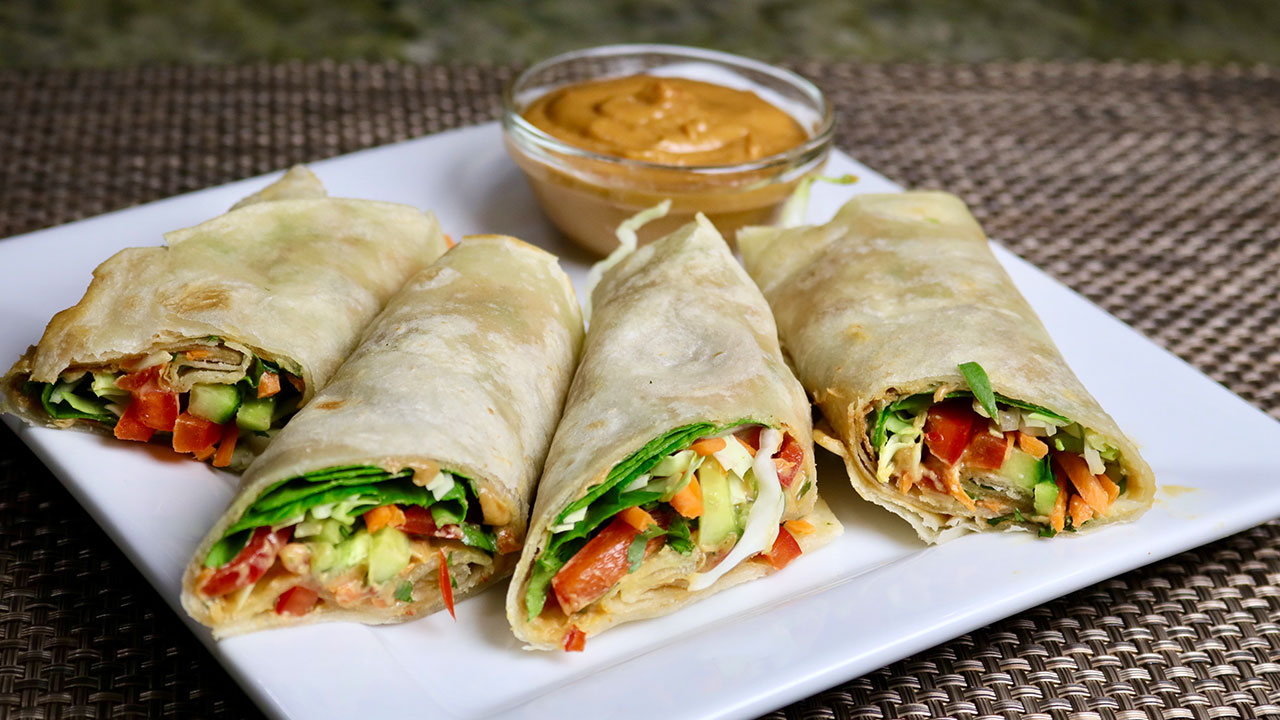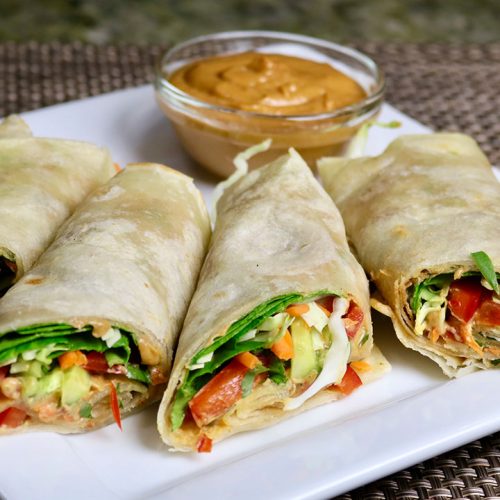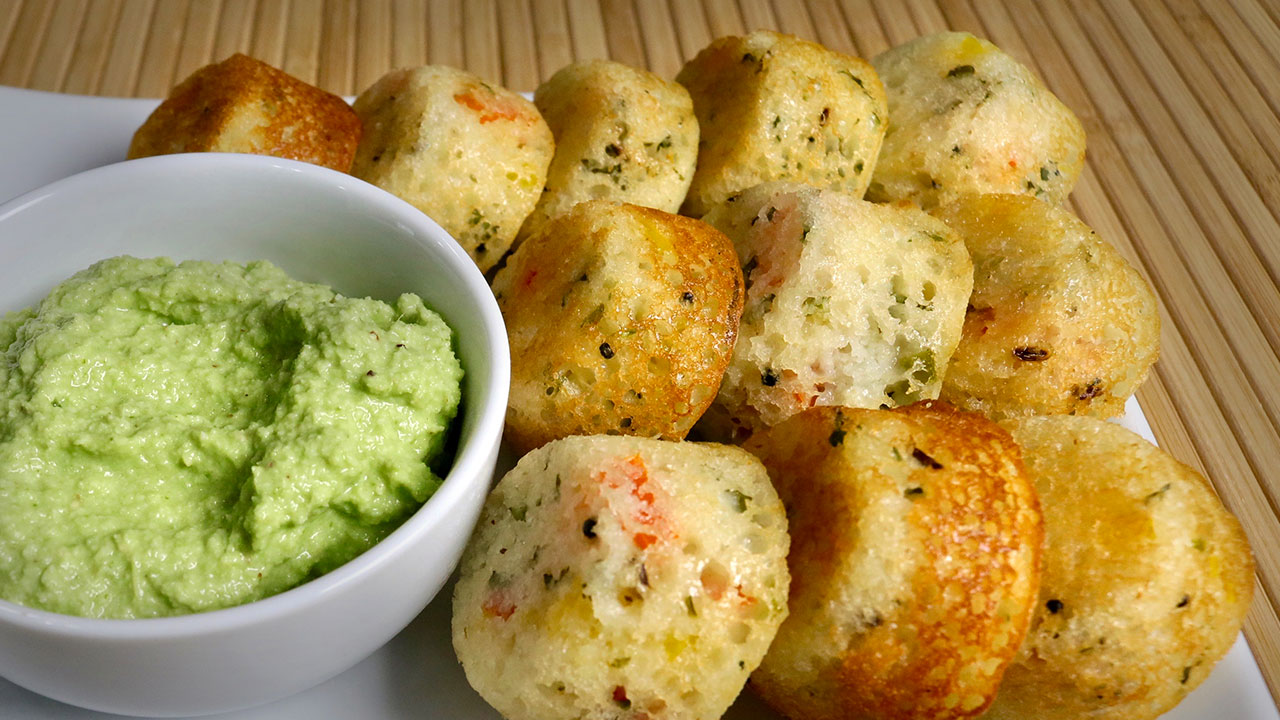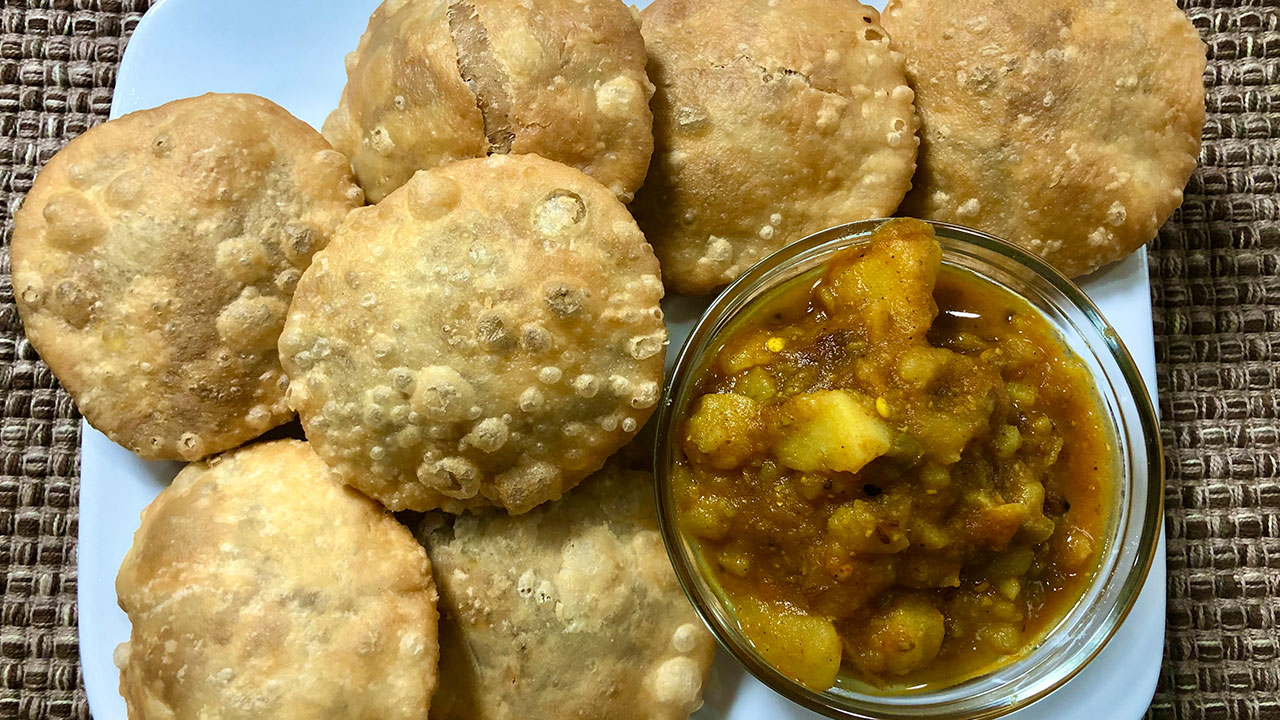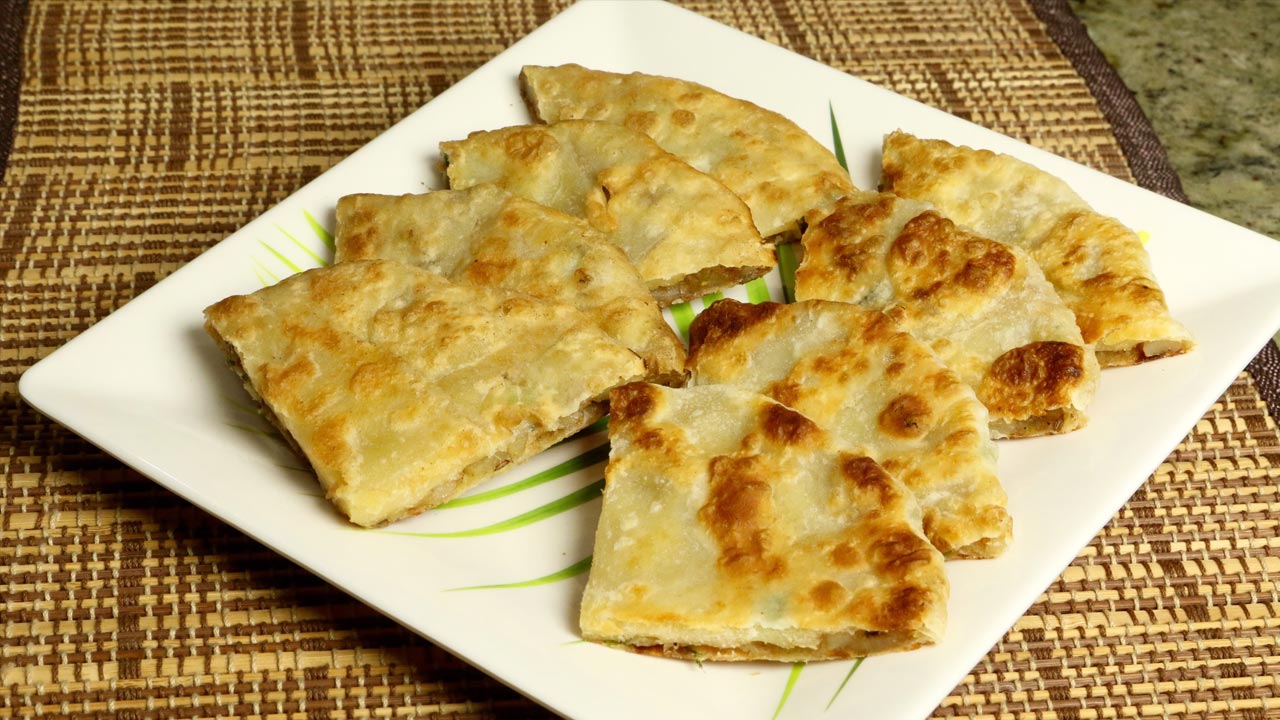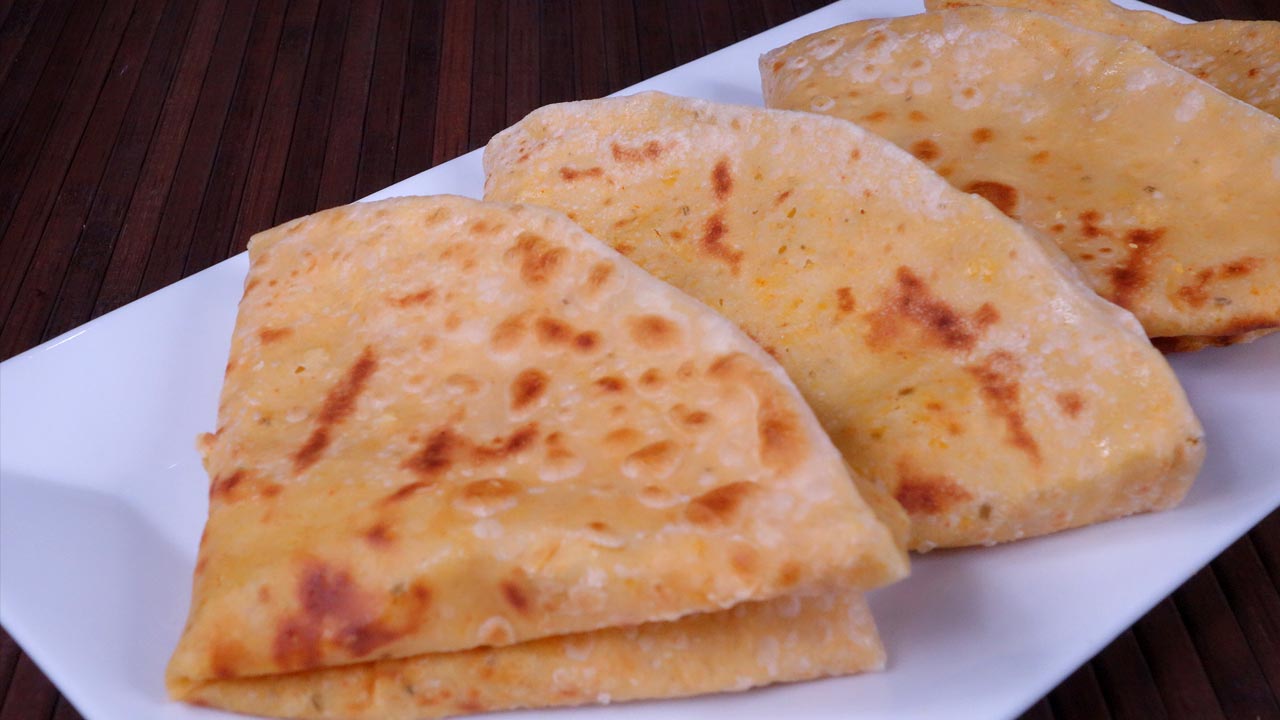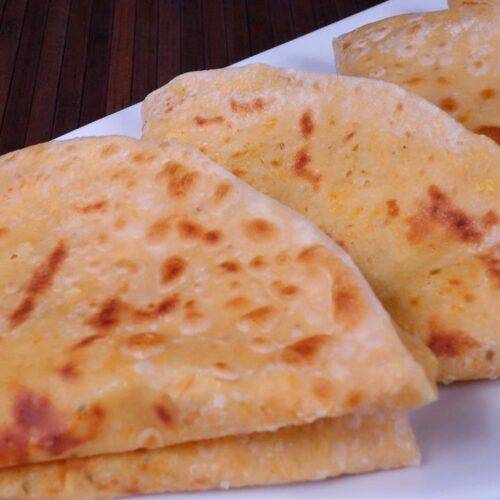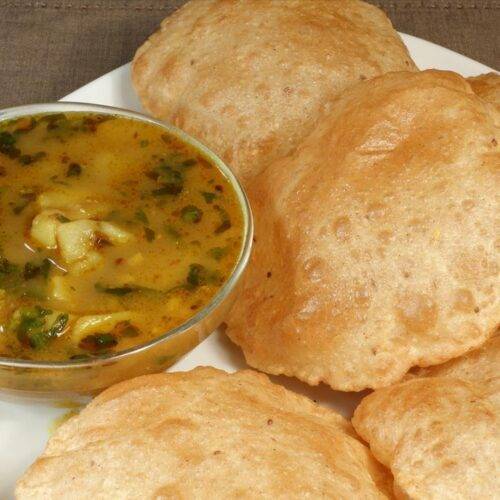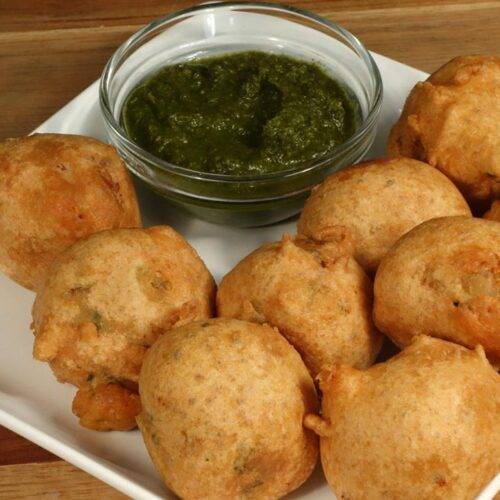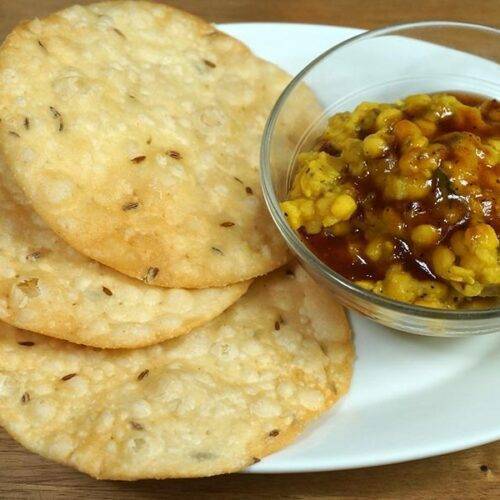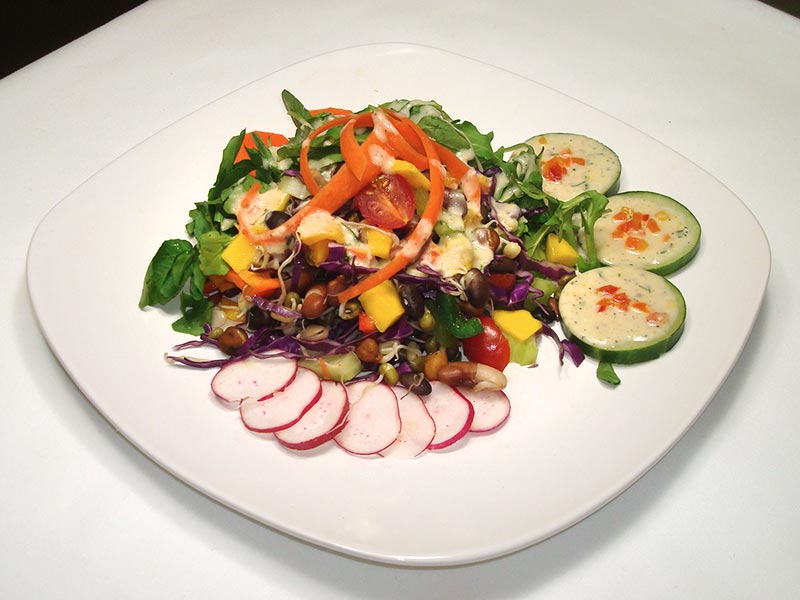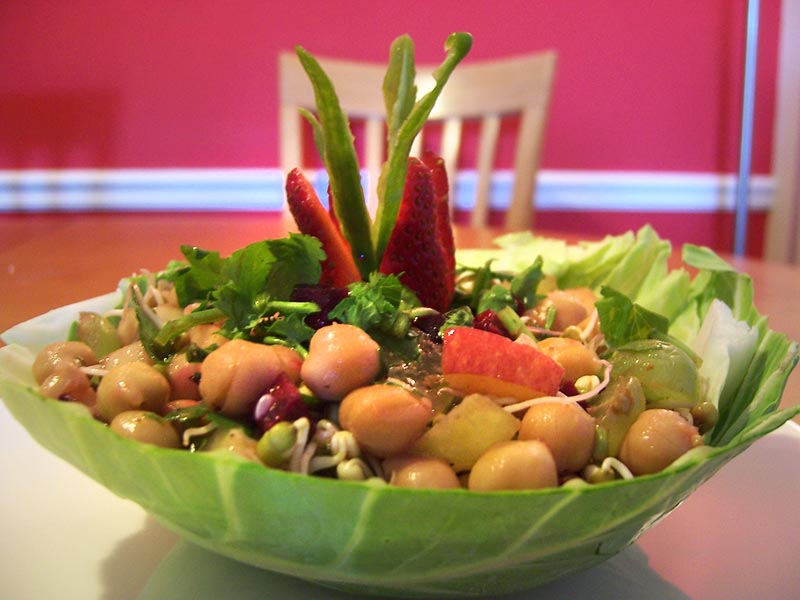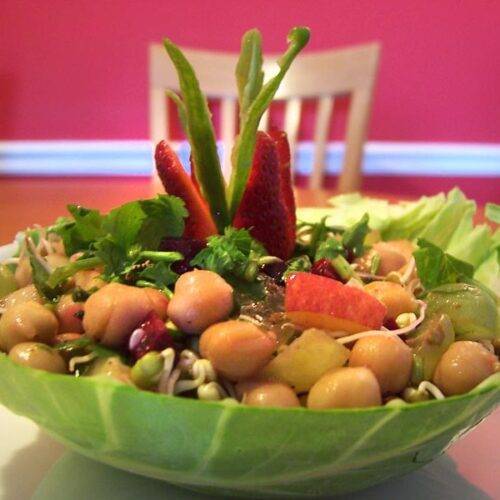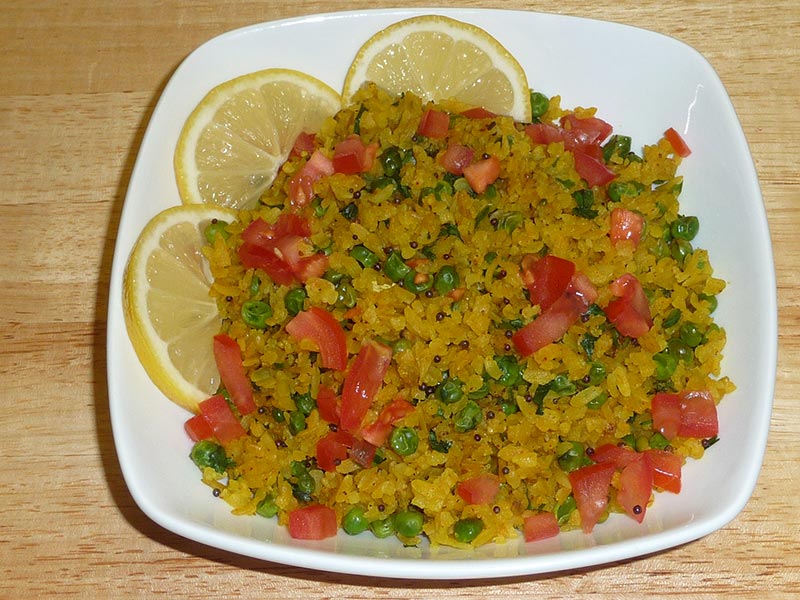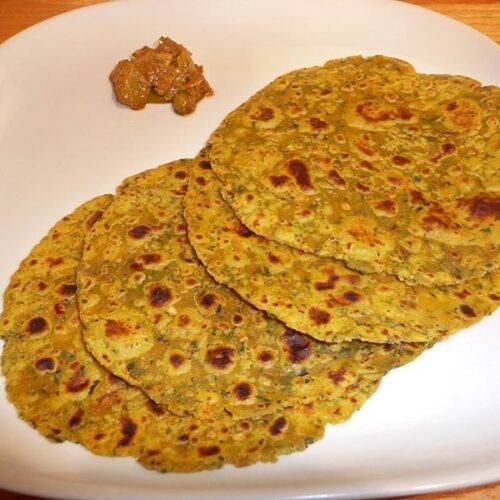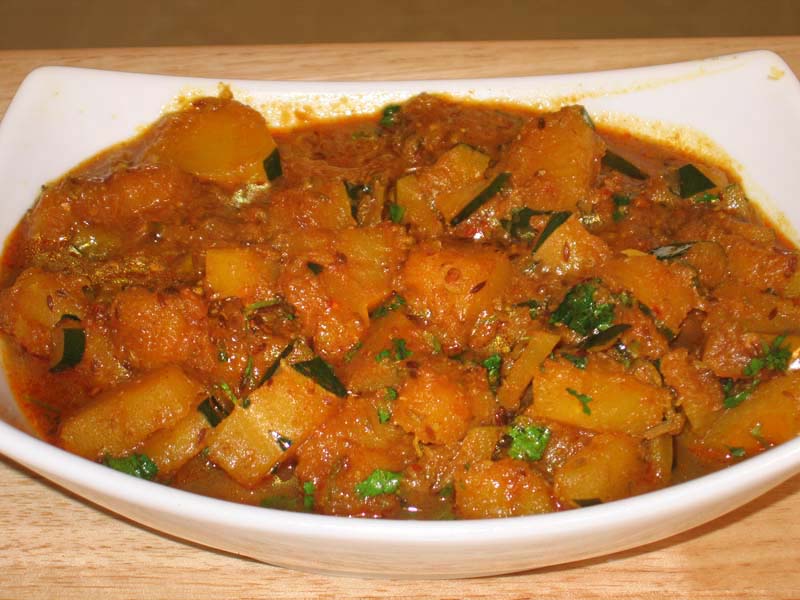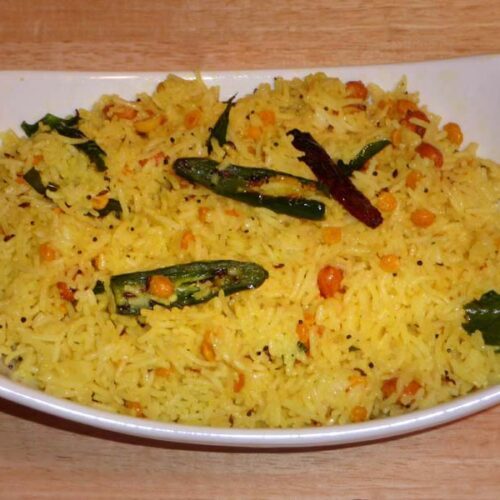Vegetable Kathi roll
Ingredients
For Kathi roll
- 2 uncooked tortilla
- 2 tsp oil to cook the tortillas
- About 20 spinach leaves cut into 2-3 pieces
- ½ cup red bell pepper thinly sliced and remove the seeds
- 1 cup cabbage thinly sliced
- ¼ cup carrots shredded
- ½ cup cucumber thinly sliced
- 2 Tbsp cilantro leaves finely chopped
Peanut Sauce
- ¼ cup peanut butter
- 2 Tbsp soy sauce
- 1 Tbsp ginger juice
- 1 Tbsp sugar
- 2 Tbsp lime juice
- 1 Tbsp sesame oil optional
- 3 whole red chilies
Instructions
Sauce
- Remove the seeds from red chili and soak in 2 tablespoons of hot water for few minutes. Blend all the ingredients together except peanut butter, soy sauce, ginger juice, sugar, lime juice, and sesame oil. After spices are blended to paste add peanut butter and blend enough to mix t well. Note: don’t over blend peanut butter will leave the oil.
- Check if the salt is needed, soy sauce is quite salty.
Kathi Roll
- Heat the skillet over medium high, lightly oil the skillet, place the tortilla over skillet for about half a minute, it will change in the color lightly and puff different places. Flip the tortilla over, and lightly brush the oil, flip it again and lightly brush the tortilla. tortilla should have light golden color on both sides.
- Remove the tortilla from the skillet, make both tortilla same way. And set it aside. You can cook the tortillas in advance.
Assembling the Frankie
- Take one tortilla and put it over a flat surface. Spread about 2 tablespoons of peanut sauce over tortilla, leaving 1/2 inch around. Center of the tortilla spread the vegetables moderately, spinach, carrot, bell pepper, cucumber, cabbage, and cilantro. Roll them tightly like burrito.
- Use extra peanut sauce as a dip.
Notes
Guide to How to make Vegetable Kathi Rolls
Welcome to our comprehensive recipe for vegetable kathi roll. Whether you’re a seasoned cook or a beginner in the kitchen, this recipe promises to deliver a delicious and satisfying appetizer. Kathi Rolls, a popular street food in India, are versatile and customizable, making them perfect for any occasion.
Paired with our homemade peanut sauce, they are sure to impress your family and friends. In this guide, we’ll walk you through each step of the process, providing clear instructions, helpful tips, and suggestions for variations. Let’s get started!
Step-by-Step Instructions: Preparing the Sauce
To start, let’s prepare the flavorful peanut sauce that will elevate your Kathi Rolls to the next level.
- Begin by removing the seeds from the red chili and soaking them in two tablespoons of hot water for a few minutes. This step helps to soften the chili and enhance its flavor.
- Once the chili is soaked, blend all the ingredients together in a blender, excluding the peanut butter, soy sauce, ginger juice, sugar, lime juice, and sesame oil. This will create a fragrant and spicy paste.
- After blending the spices into a paste, add the peanut butter to the mixture. Be careful not to overblend, as this can cause the peanut butter to release its oil.
- Taste the sauce and adjust the salt if necessary. Remember that soy sauce is quite salty, so proceed with caution.
Cooking the Kathi Rolls
Now that the sauce is ready, let’s move on to assembling the Kathi Rolls.
- Heat a skillet over medium-high heat and lightly oil the surface. This will prevent the tortillas from sticking.
- Once the skillet is hot, place a tortilla on it for about half a minute. You’ll notice the tortilla changing color slightly and puffing up in different places.
- Flip the tortilla over and lightly brush it with oil. Repeat this process, flipping the tortilla again and brushing it with oil until it achieves a light golden color on both sides.
- Remove the tortilla from the skillet and repeat the process with the remaining tortillas. You can cook the tortillas in advance and set them aside for later use.
Assembling the Kathi Rolls
Now it’s time to assemble the Kathi Rolls with our delicious peanut sauce.
- Take one tortilla and lay it flat on a clean surface. Spread approximately two tablespoons of peanut sauce evenly over the tortilla, leaving about half an inch of space around the edges.
- In the center of the tortilla, layer the vegetables generously. You can use a combination of spinach, carrots, bell peppers, cucumbers, cabbage, and cilantro for a colorful and nutritious filling.
- Once the vegetables are in place, carefully roll the tortilla tightly like a burrito, ensuring that the filling is secure inside.
- Repeat this process with the remaining tortillas until all the Kathi Rolls are assembled and ready to serve.
Serving Suggestions
Here are some suggestions for serving your Kathi Rolls with Peanut Sauce:
- Serve the rolls with extra peanut sauce on the side for dipping.
- Instead of tortillas, you can use leftover Roti or Paratha for a more traditional twist.
- Pair the rolls with a side of vegetable salad, French fries, or a variety of bread for a complete meal.
Notes and Tips
- Be mindful not to overblend the peanut butter when preparing the sauce, as it can release its oil and affect the texture.
- Adjust the salt level in the sauce according to your preference, keeping in mind the saltiness of the soy sauce.
- You can customize the filling of the Kathi Rolls according to your taste preferences. Try addingpaneer, or tofu for added protein.
- If you’re preparing the rolls in advance, store them in an airtight container in the refrigerator and reheat them in the oven or microwave before serving for best results.
Frequently Asked Questions (FAQ)
Q: Can I make the peanut sauce ahead of time?
A: Yes, you can prepare the peanut sauce in advance and store it in the refrigerator for up to a week. Just make sure to stir it well before using.
Q: Can I make the Kathi Rolls with gluten-free tortillas?
A: Absolutely! You can use gluten-free tortillas or even lettuce wraps as a substitute for traditional tortillas.
Q: Can I freeze the assembled Kathi Rolls?
A: While it’s possible to freeze the assembled rolls, the texture of the vegetables may change upon thawing. It’s best to assemble the rolls just before serving for the freshest taste.
Benefits of Kathi Rolls with Peanut Sauce
- Kathi Rolls are a convenient and portable meal option, perfect for on-the-go lunches or picnics.
- The peanut sauce adds a rich and creamy texture to the rolls while providing a good source of protein and healthy fats.
- With a variety of vegetables in the filling, Kathi Rolls are a nutritious option that can help you meet your daily intake of vitamins and minerals.
- By making your own Kathi Rolls at home, you can control the ingredients and customize them to suit your dietary preferences and restrictions.
We hope this guide has inspired you to try making Kathi Rolls with Peanut Sauce at home. Enjoy experimenting with different fillings and variations to create your own delicious twist on this classic street food!
Explore more appetizer recipes on Manjula’s Kitchen: Vegetable Samosas, Paneer Tikka, Crispy Spinach Pakoras, Mango Lassi, Masala Chai, Gulab Jamun, Kheer (Rice Pudding)

